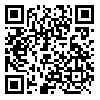Thu, Jul 31, 2025
[Archive]
Volume 6, Issue 2 (JUNE: Special Issue 2025)
johepal 2025, 6(2): 154-161 |
Back to browse issues page
Download citation:
BibTeX | RIS | EndNote | Medlars | ProCite | Reference Manager | RefWorks
Send citation to:



BibTeX | RIS | EndNote | Medlars | ProCite | Reference Manager | RefWorks
Send citation to:
Bell N, Robinson D A. (2025). Men of Color Initiatives and Programs (MOCI) as Sites for Leadership Development. johepal. 6(2), 154-161. doi:10.61186/johepal.6.2.154
URL: http://johepal.com/article-1-1261-en.html
URL: http://johepal.com/article-1-1261-en.html
Abstract: (299 Views)
- Men of color initiatives and programs (MOCI) are asset-based, anti-deficit sites of enormous growth and development for college men of color.
- One underappreciated area with MOCI is their potential for leadership learning and education.
- By utilizing social justice approaches in MOCI, college men can further develop essential leadership skills to help them and the communities they advocate for succeed inside and outside of the classroom.
- Utilizing the culturally relevant leadership learning (CRLL) model and prior literature, this article will discuss the implications of how MOCI may enhance the leadership identity, capacity, and efficacy of the students they serve.
Keywords: Leadership Education, Masculinity, Men of Color Initiatives (MOCI), Culturally Relevant Leadership Approaches
Type of Study: Research |
Subject:
Special
Received: 2025/02/20 | Accepted: 2025/05/1 | Published: 2025/06/30
Received: 2025/02/20 | Accepted: 2025/05/1 | Published: 2025/06/30
References
1. Adams, T. L., & McBrayer, J. S. (2020). The lived experiences of first-generation college students of color integrating into the institutional culture of a predominantly white institution. The Qualitative Report, 25(3), 733-757. [DOI]
2. Beatty, C. C., & Guthrie, K. L. (2021). Operationalizing culturally relevant leadership learning. Emerald Publishing Limited.
3. Bertrand Jones, T., Guthrie, K. L., & Osteen, L. (2016). Critical domains of culturally relevant leadership learning: A call to transform leadership programs. New Directions for Student Leadership, 2016(152), 9-21. [DOI]
4. Bordas, J. (2016). Leadership lessons from communities of color: Stewardship and collective action. New Directions for Student Leadership, 2016(152), 61-74. [DOI]
5. Brooms, D. R. (2018). Exploring Black male initiative programs: Potential and possibilities for supporting Black male success in college. The Journal of Negro Education, 87(1), 59-72. [DOI]
6. Brooms, D. R., Goodman, J., & Clark, J. (2015). “We need more of this”: Engaging Black men on college campuses. College Student Affairs Journal, 33(1), 105-123. [DOI]
7. Hotchkins, B. K., & Dancy, T. (2015). Black male student leaders in predominantly white universities: Stories of power, preservation, and persistence. Western Journal of Black Studies, 39(1), 30-44.
8. Huerta, A. H. (2022). Exploring undergraduate students’ emotional vulnerability in men of color programs. Journal of College Student Development, 63(1), 51-68. [DOI]
9. Huerta, A. H., Romero-Morales, M., Dizon, J. P. M., & Nguyen, J. V. (2021a). Lessons learned from men of color programs: A roadmap to guide program development and beyond. Pullias Center for Higher Education. [Article]
10. Huerta, A. H., Romero-Morales, M., Dizon, J. P. M., Salazar, M. E., & Nguyen, J. V. (2021b). Empowering men of color in higher education: A focus on psychological, social, and cultural factors. Pullias Center for Higher Education. [Article]
11. Hurtado, S., & Ruiz Alvarado, A. (2015). Discrimination and bias, underrepresentation, and sense of belonging on campus. Higher Education Research Institute, University of California at Los Angeles. [Article]
12. National Center for Data Statistics. (2023). Status dropout rates. U.S. Department of Education, Institute of Education Sciences. [Article]
13. Richburg-Hayes, L., Manno, M., Cerna, O., Lewy, E. B., Yang, E., & Martin-Lawrence, A. (2023). Pathway to college achievement: A mixed-methods evaluation of the male student success initiative for men of color. MDRC. [Article]
14. Robles, R. (2024). Empowering voices: Perspectives and experiences of latino and black men in minority serving institutions’ male success initiatives (Publication No. 31486662) [Doctoral dissertation, Claremont Graduate University]. ProQuest Dissertations Publishing. [Article]
15. Strayhorn, T. L. (2008). The role of supportive relationships in facilitating African American males’ success in college. NASPA Journal, 45(1), 26-48. [DOI]
16. U.S. Department of Commerce. (2017). My Brother’s Keeper: How Commerce Has Created Pathways to Success in the Workforce for Our Nation’s Youth. US Department of Commerce. [Article]
17. Yosso, T. J. (2005). Whose culture has capital? A critical race theory discussion of community cultural wealth. Race, Ethnicity and Education, 8(1), 69-91. [DOI]
18. Zell, M. (2011). I am my brother’s keeper: The impact of a Brother2Brother program on African American men in college. Journal of African American Males in Education, 2(2), 214-233. [Article]
| Rights and permissions | |
 |
This work is licensed under a Creative Commons Attribution-NonCommercial 4.0 International License. |




